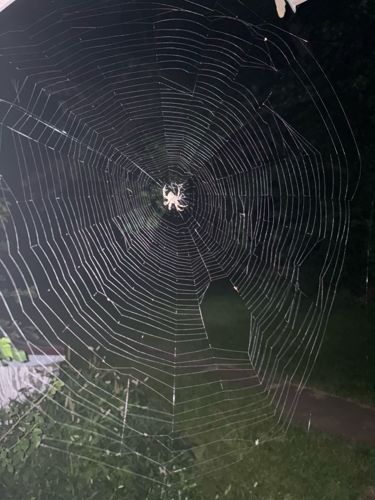Orb Weaver Spider (likely genus Argiope or Neoscona based on visible features and web type)
Scientific Name: Too difficult to determine exact species from the image, but falls within Family Araneidae. Possibly *Argiope aurantia* (Black and Yellow Garden Spider) or a species from the genus *Neoscona* (Common Orb Weaver).
Order & Family: Order: Araneae, Family: Araneidae
Size: Body length typically ranges from 5 mm to 30 mm, depending on the specific species and sex (females are generally larger than males).

Natural Habitat
Orb weavers are found in a wide variety of habitats including gardens, forests, fields, agricultural areas, and around human dwellings. They tend to build their webs in open spaces between trees, shrubs, or structures.
Diet & Feeding
Mainly flying insects like flies, moths, mosquitoes, and beetles that get ensnared in their sticky webs.
Behavior Patterns
Orb weavers are known for constructing large, intricate circular webs, often overnight. They typically hang head-down in the center of their web, waiting for prey. Many species will dismantle and rebuild their web daily, consuming the old silk. They are active primarily at night.
Risks & Benefits
Risks: Generally harmless to humans. While they can bite, their venom is not considered medically significant to humans, and bites are rare and usually occur only if the spider is provoked. Symptoms are typically mild, similar to a bee sting. Benefits: They are highly beneficial as natural pest control, consuming a large number of nuisance insects. They are also an important part of the food chain.
Identified on: 8/18/2025